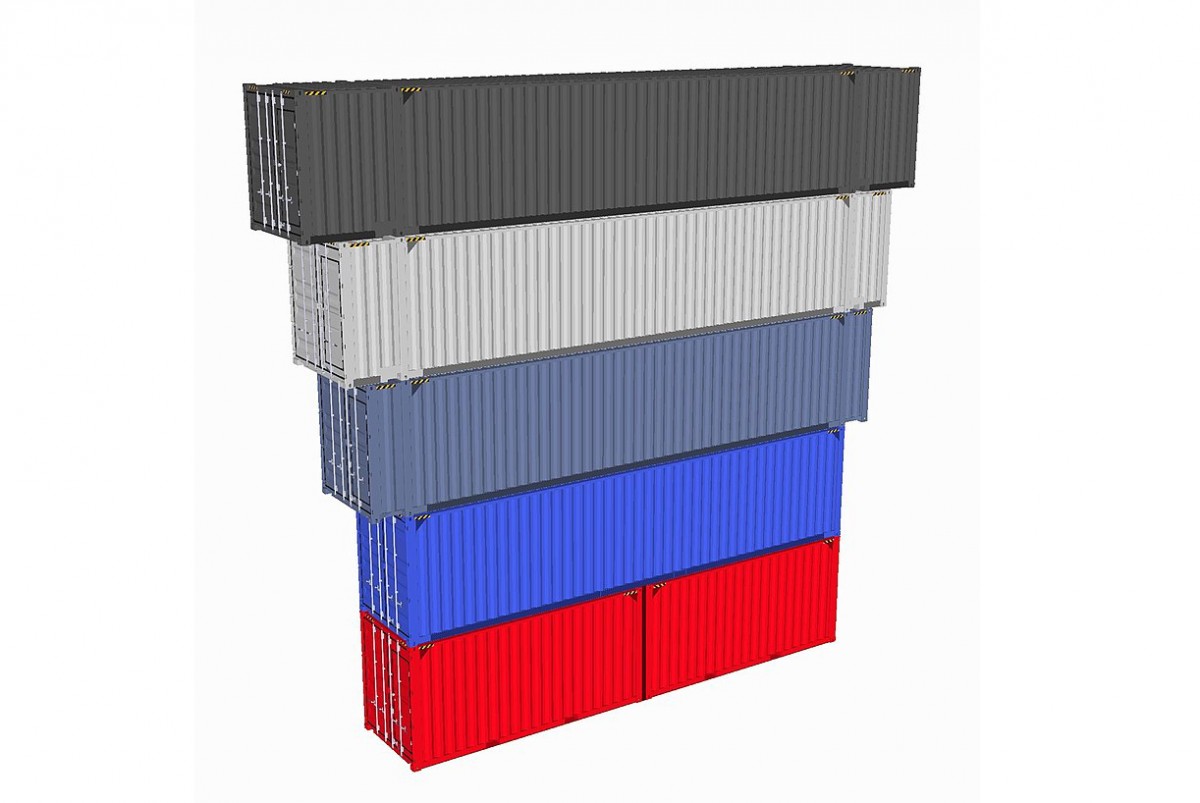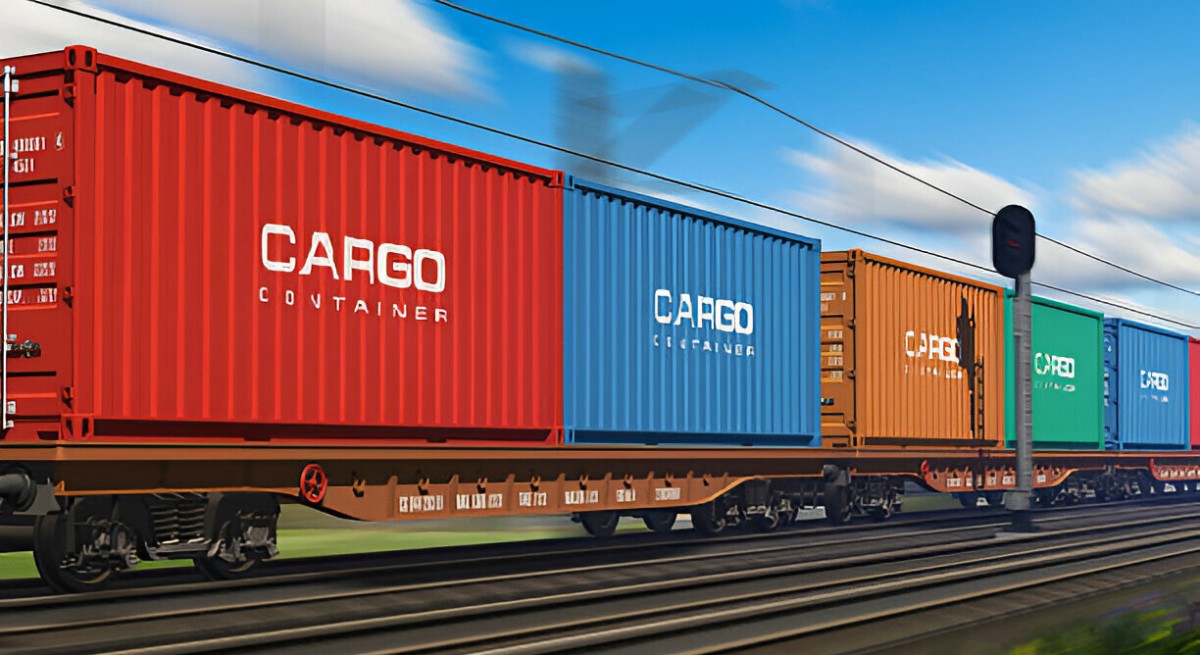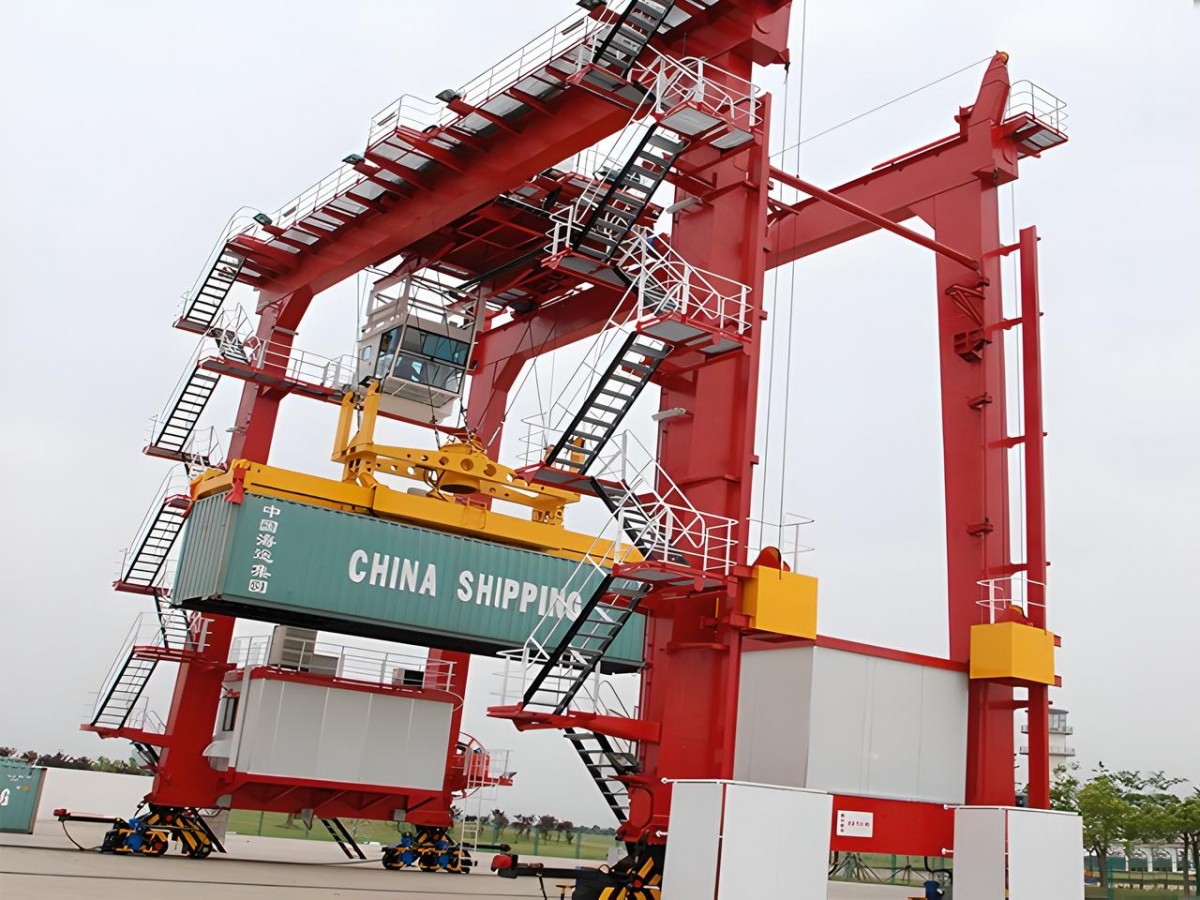The twenty-foot equivalent unit (TEU) is a standardized measure of cargo capacity widely used in container shipping and ports. It is based on the dimensions of a 20-foot-long (6.1 m) intermodal container, a versatile metal box designed for seamless transport across ships, trains, and trucks.
Standard Dimensions of Intermodal Containers
| Length | Width | Height | Internal Volume | TEU | Notes |
|---|---|---|---|---|---|
| 20 ft (6.1 m) | 8 ft (2.44 m) | 8 ft 6 in (2.59 m) | 1,172 cu ft (33.2 m³) | 1 | Standard container |
| 40 ft (12.2 m) | 8 ft (2.44 m) | 8 ft 6 in (2.59 m) | 2,389 cu ft (67.6 m³) | 2 | Standard container |
| 48 ft (14.6 m) | 8 ft (2.44 m) | 8 ft 6 in (2.59 m) | 3,264 cu ft (92.4 m³) | 2.4 | North American use |
| 53 ft (16.2 m) | 8 ft (2.44 m) | 8 ft 6 in (2.59 m) | 3,604 cu ft (102.1 m³) | 2.65 | North American use |
| 20 ft (6.1 m) | 8 ft (2.44 m) | 9 ft 6 in (2.90 m) | 1,520 cu ft (43 m³) | 1 | High cube |
| 20 ft (6.1 m) | 8 ft (2.44 m) | 4 ft 3 in (1.30 m) | 680 cu ft (19.3 m³) | 1 | Half-height |
Key Container Types and Usage
- Standard Containers: Measuring 20 or 40 feet, these containers are globally accepted for various goods.
- High Cube Containers: Taller containers providing additional volume.
- Half-Height Containers: Designed for heavy goods with lower height requirements.
- Forty-Foot Equivalent Unit (FEU): Represents two TEUs, making it a common alternative measure.

Capacity Measurements for Shipping
Ships’ carrying capacities are measured using:
- Deadweight Tonnage (DWT): Indicates mass capacity in metric tons.
- Net Register Tonnage (NRT): Reflects volume capacity, measured in register tons (1 register ton = 100 cubic feet).
The TEU is an approximate unit and not a precise measure. For example, while a 45-foot container could theoretically be 2.25 TEUs, it is commonly rounded to 2 TEUs for simplicity.
Cargo Mass and TEU
- 20-foot container: Maximum gross mass is 24,000 kg (53,000 lb), with a net cargo capacity of about 21,600 kg (47,600 lb) after deducting tare weight.
- 40-foot container: Maximum gross mass is 30,480 kg (67,200 lb), and net cargo capacity is approximately 26,500 kg (58,400 lb).
- Heavy-Tested Containers: Designed for heavy machinery, these containers allow a net load of up to 28,080 kg (61,910 lb).
Advantages of Standardized Containers
- Interoperability: Ensures smooth transfer between transport modes.
- Efficient Stacking: Enables optimal space utilization on ships.
- Flexibility: Accommodates various lengths (20 ft, 40 ft, 45 ft, 48 ft, and 53 ft) to meet diverse shipping needs.
Special Considerations for Larger Containers
Longer containers, like 48-foot and 53-foot units, are prevalent in North America but restricted to road and rail transport. Their dimensions align with regulations, avoiding the need for special permissions.
FAQs About TEU and Cargo Capacity
- What is a TEU, and how is it used?
A TEU, or twenty-foot equivalent unit, is a standard measurement for cargo capacity. It’s based on the size of a 20-foot container and helps measure the capacity of ships, ports, and logistics systems. - What are the dimensions of a standard TEU container?
A standard TEU container is 20 feet (6.1 m) long, 8 feet (2.44 m) wide, and 8 feet 6 inches (2.59 m) high. High cube containers, which are taller at 9 feet 6 inches (2.90 m), also fall under TEU measurement. - What is the difference between TEU and FEU?
An FEU, or forty-foot equivalent unit, is equal to 2 TEUs. It represents the capacity of a 40-foot container, commonly used alongside the TEU for logistical purposes. - How much weight can a TEU carry?
A 20-foot container can carry up to 24,000 kg (53,000 lb) gross weight. After accounting for the tare weight, its net cargo capacity is approximately 21,600 kg (47,600 lb). - Why are TEUs important for shipping logistics?
TEUs simplify logistics by standardizing container sizes, enabling compatibility between transportation modes and improving the efficiency of global trade operations.
The TEU remains a cornerstone of global trade, standardizing shipping logistics. By understanding its specifications and implications, businesses can optimize shipping strategies, ensuring cost-effective and efficient operations.
























